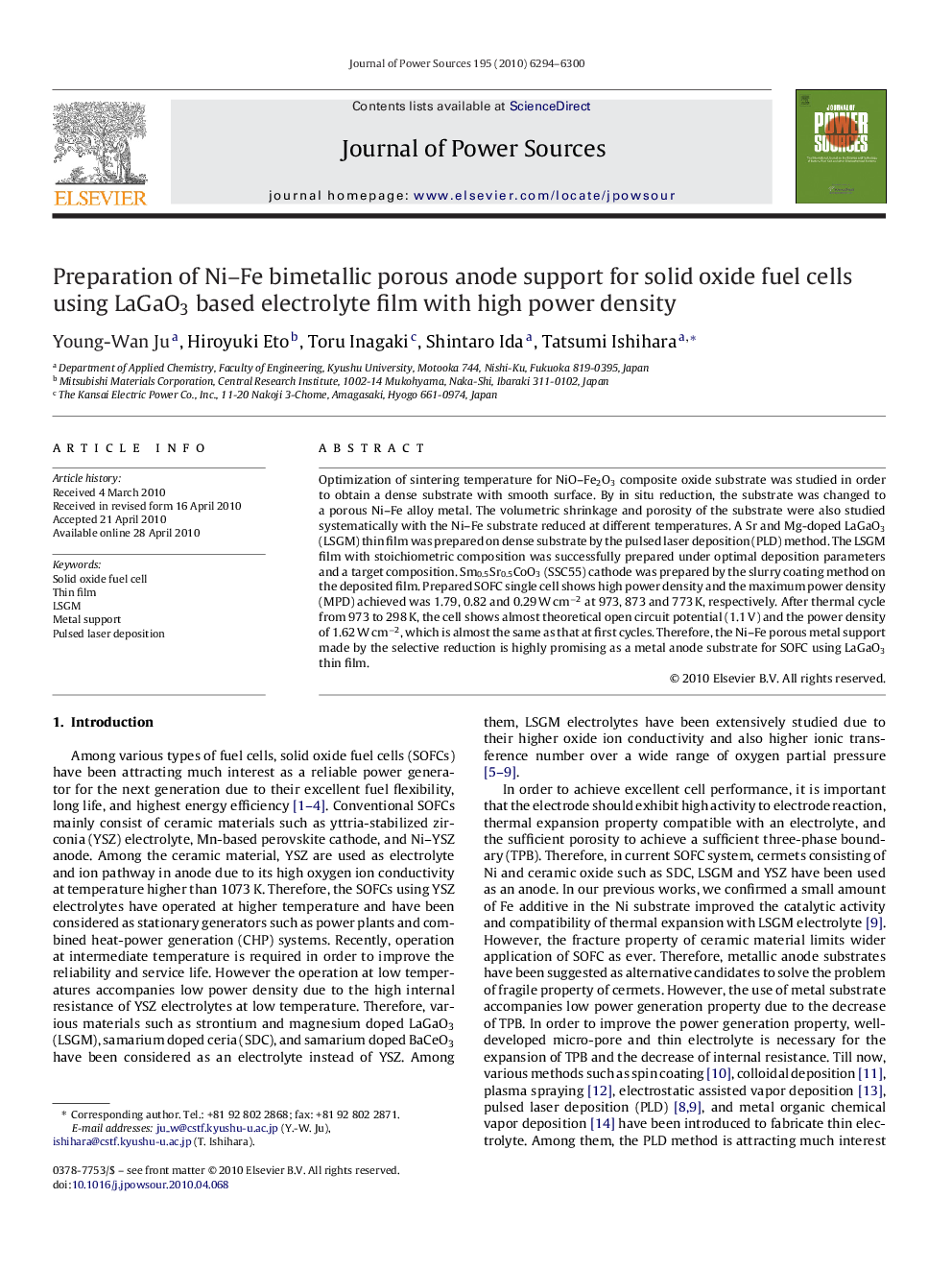| Article ID | Journal | Published Year | Pages | File Type |
|---|---|---|---|---|
| 1289346 | Journal of Power Sources | 2010 | 7 Pages |
Optimization of sintering temperature for NiO–Fe2O3 composite oxide substrate was studied in order to obtain a dense substrate with smooth surface. By in situ reduction, the substrate was changed to a porous Ni–Fe alloy metal. The volumetric shrinkage and porosity of the substrate were also studied systematically with the Ni–Fe substrate reduced at different temperatures. A Sr and Mg-doped LaGaO3 (LSGM) thin film was prepared on dense substrate by the pulsed laser deposition (PLD) method. The LSGM film with stoichiometric composition was successfully prepared under optimal deposition parameters and a target composition. Sm0.5Sr0.5CoO3 (SSC55) cathode was prepared by the slurry coating method on the deposited film. Prepared SOFC single cell shows high power density and the maximum power density (MPD) achieved was 1.79, 0.82 and 0.29 W cm−2 at 973, 873 and 773 K, respectively. After thermal cycle from 973 to 298 K, the cell shows almost theoretical open circuit potential (1.1 V) and the power density of 1.62 W cm−2, which is almost the same as that at first cycles. Therefore, the Ni–Fe porous metal support made by the selective reduction is highly promising as a metal anode substrate for SOFC using LaGaO3 thin film.
